Disclosure: This article contains affiliate links. We may earn a commission from purchases at no extra cost to you, which helps our travel content.
The border between Paraguay and Brazil pulses with a peculiar energy—part chaotic marketplace, part natural wonder, and entirely unlike anywhere else I've visited in my six decades of life. When my old college roommate Jim suggested we meet up with our respective families for a spring getaway to see Iguazu Falls from the road less traveled, I couldn't resist. After twenty years penning mysteries in Pittsburgh and another decade in Chennai, I've developed a taste for the unconventional path. Most tourists approach these magnificent falls from Argentina or Brazil, but starting our journey in Ciudad del Este, Paraguay offered a rich cultural immersion before the main attraction. What followed was a week of border-crossing adventures, thundering waterfalls, and late-night conversations that reminded me why family travel—whether blood relations or chosen family—remains the most rewarding way to experience our complex world.
Setting Up Base in Ciudad del Este
Ciudad del Este isn't winning any beauty contests. This Paraguayan border city thrums with commercial energy—a sprawling, somewhat chaotic marketplace where electronics, perfumes, and knockoff designer goods flow across borders with varying degrees of documentation. But beneath this frenetic surface lies an ideal launching point for Iguazu adventures.
We chose the Hotel Casino Acaray as our base, a decision that satisfied both my lifelong gaming hobby and our need for comfortable accommodations. The hotel sits alongside the Paraná River, offering surprising tranquility given its proximity to the bustling city center. The rooms are spacious enough for families, with reliable air conditioning—a necessity in Paraguay's humid spring climate.
After settling in, we ventured into the city's commercial district, not to shop (though the prices tempt even the most disciplined budgets) but to observe the fascinating trilingual dance of commerce. Guaraní, Spanish, and Portuguese blend in musical cadence as vendors and customers haggle. For dinner, we discovered Bolsi Restaurant, where traditional Paraguayan dishes like surubí (river fish) and sopa paraguaya (a dense cornbread) provided our first taste of local cuisine.
That evening, I indulged in a few hours at the hotel's casino while the younger members of our group explored the hotel pool. The gaming floor wasn't Vegas-caliber, but it offered enough blackjack and poker tables to keep this mystery novelist entertained while imagining characters for my next book.

💡 Pro Tips
- Book accommodations on the outskirts of Ciudad del Este for a quieter experience
- Exchange some currency for Paraguayan guaraní despite many vendors accepting Brazilian reals and US dollars
- Try the traditional yerba mate tea served in a guampa (gourd) with a bombilla (metal straw)
Crossing Borders: The Friendship Bridge Experience
There's something deeply symbolic about crossing the Friendship Bridge (Puente de la Amistad) that connects Paraguay to Brazil. Built in 1965, this 552-meter concrete structure spans the Paraná River and serves as both physical connection and metaphorical gateway between nations.
Crossing with family requires patience and preparation. Immigration lines can stretch interminably, especially during peak tourist seasons. We arrived early, around 8 AM, armed with our passports, hotel reservation printouts, and completed immigration forms. Even so, the process took nearly two hours.
The bridge itself teems with pedestrians, motorcycles weaving dangerously between lanes, and vendors selling everything from bottled water to questionable souvenirs. My wife's executive-level organizational skills proved invaluable as she shepherded our group through the bureaucratic maze while I entertained everyone with improvised stories about our fellow travelers.
Once across, Foz do Iguaçu presents a stark contrast to Ciudad del Este—more orderly, more tourist-oriented, and significantly more expensive. We hired a local guide recommended by our hotel, which I'd arranged through a travel planning notebook that's accompanied me on adventures across four continents. Having a Portuguese speaker navigate the Brazilian side saved countless headaches and provided cultural insights no guidebook could offer.
Our guide, Paulo, immediately suggested we adjust our itinerary to visit the falls the following day rather than immediately. "Tuesday is quieter," he insisted. "Monday brings weekend holdovers." This local knowledge proved invaluable—travel flexibility remains the greatest luxury, especially when crossing international borders with family in tow.

💡 Pro Tips
- Cross the Friendship Bridge early morning (before 9 AM) to minimize wait times
- Keep photocopies of all travel documents separate from originals
- Arrange transportation on the Brazilian side in advance rather than negotiating at the border
The Brazilian Side: Cataratas do Iguaçu
"You'll want to protect your camera," Paulo warned as we approached the falls on the Brazilian side. "The mist has claimed many electronics over the years." I nodded, adjusting my waterproof camera bag that has survived downpours from Chennai to Cape Town.
The Brazilian approach to Iguazu Falls (or Cataratas do Iguaçu as they're known locally) offers the panoramic perspective—a series of walkways that provide progressively more impressive views of the 275 individual drops that constitute this natural wonder. The anticipation builds with each step, the roar of water growing from background noise to all-encompassing thunder.
What struck me most wasn't just the falls themselves, though their power is undeniable. It was watching the expressions on our family members' faces as they experienced this marvel for the first time. My brother-in-law, typically stoic and reserved, stood slack-jawed at the Devil's Throat overlook, the spray painting his glasses with tiny rainbows.
The Brazilian side requires about half a day to explore properly. We took the elevator up to the panoramic lookout point, then down again to board a boat that brought us unsettlingly close to the base of the falls. The Macuco Safari boat ride isn't for the faint of heart—or those precious about staying dry. Despite wearing the provided ponchos, we were drenched within minutes, laughing like children as the boat captain navigated perilously close to the thundering water.
Lunch at the park's Porto Canoas restaurant offered surprising quality for a tourist destination, with traditional Brazilian dishes and cold caipirinhas to celebrate our soaking. As we dried in the spring sunshine, colorful butterflies and inquisitive coatis (raccoon-like creatures) provided entertainment, though we heeded warnings not to feed the wildlife.
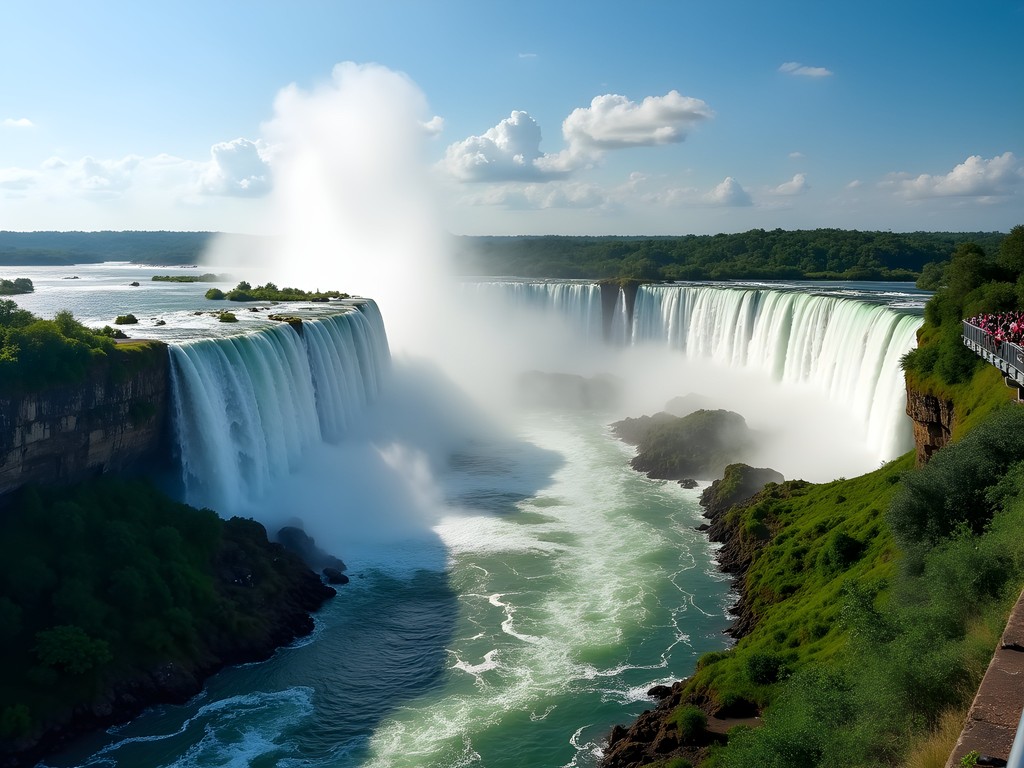
💡 Pro Tips
- Book Macuco Safari boat rides in advance during high season
- Bring a change of clothes if taking the boat tour—you WILL get soaked
- Visit early morning for better wildlife spotting opportunities
The Paraguayan Perspective: Saltos del Monday
While the Brazilian and Argentine sides of Iguazu Falls draw millions annually, few travelers venture to nearby Saltos del Monday, Paraguay's own impressive waterfall system just 8 kilometers from Ciudad del Este. After experiencing the grandeur of Iguazu, we almost skipped this lesser-known attraction—which would have been a tremendous mistake.
Saltos del Monday may be smaller (about 40 meters high compared to Iguazu's 82 meters), but what it lacks in size it compensates for with tranquility and accessibility. We arrived mid-afternoon to find fewer than twenty other visitors exploring the network of trails and viewing platforms. The entrance fee was modest (approximately $5 USD per person), and parking was free and plentiful.
The falls cascade through dense Atlantic Forest, with wooden walkways offering multiple vantage points. For the adventurous, a steep staircase descends to the base of the falls where the thundering water creates a perpetual mist. My knees reminded me of my sixty-one years on this planet during the climb back up, but the perspective from below was worth every protesting joint.
What made this excursion particularly special was the impromptu cultural exchange that occurred at the park's small café. The Paraguayan family at the next table noticed us consulting our South America travel guide and struck up a conversation. Despite language barriers—their limited English meeting my rudimentary Spanish—we shared a memorable hour exchanging travel stories and family photographs. Their teenage son practiced English while helping translate, and they insisted we try their homemade chipa (cheese bread), refusing payment but accepting our sincere gratitude.
These unplanned connections often become the most treasured travel memories, far outlasting the photographs of even the most spectacular waterfalls. As a novelist, I collect these human interactions like precious gems, each one potentially inspiring characters in future stories.
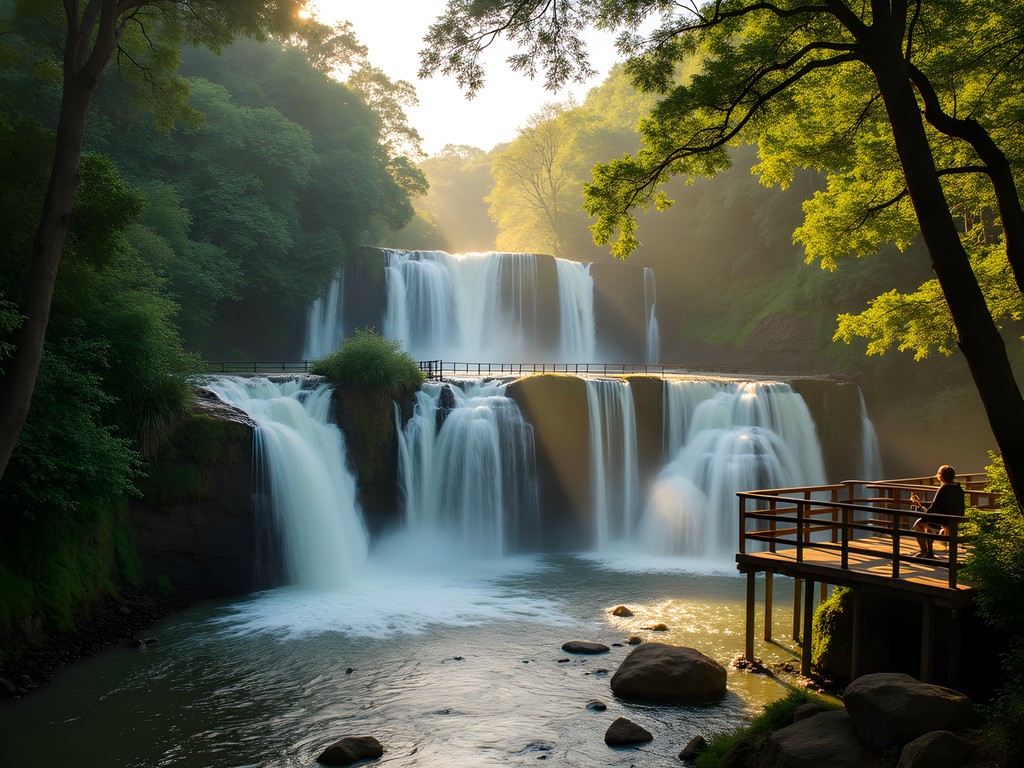
💡 Pro Tips
- Visit Saltos del Monday in late afternoon when lighting is best for photographs
- Wear sturdy shoes with good traction as pathways can be slippery
- Bring insect repellent as mosquitoes are prevalent in the forested areas
Night Moves: Evening Entertainment Across Borders
As someone who's written twenty mystery novels, I've always been fascinated by how cities transform after dark. The Triple Frontier region—where Paraguay, Brazil, and Argentina meet—offers a particularly intriguing nocturnal personality split.
In Ciudad del Este, we discovered that most tourist-oriented businesses close surprisingly early, but local life continues in neighborhood choperías (beer halls) where Paraguayan polka provides the soundtrack to evening conversations. Hotel Casino Acaray offered reliable nighttime entertainment, with live music on weekends and the gaming floor active until the early morning hours. I'll admit to spending more than one evening testing my poker skills against locals and Brazilian visitors.
Crossing to Foz do Iguaçu for evening activities requires advance planning, as border crossings become more complicated after dark. We arranged a private transfer service through our hotel that handled the logistics, allowing us to enjoy Brazilian churrascarias (barbecue restaurants) without worrying about transportation back.
The highlight of our evening explorations was undoubtedly Rafain Churrascaria's dinner show in Foz do Iguaçu. While admittedly touristy, the performance showcasing traditional dances from Brazil, Paraguay, Argentina, and other South American countries provided context to the cultural influences we'd been experiencing. The all-you-can-eat grilled meats satisfied even the heartiest appetites in our group, while the open bar kept spirits high.
For a more authentic experience, we ventured to Bar do Alemão in downtown Foz, where university students and locals gather for cold beer and heated political discussions. My decades living abroad have taught me that local bars often provide more insight into a country's current situation than any guided tour. Here, with the help of our guide Paulo translating, we engaged in fascinating conversations about border economics, environmental conservation, and the impact of tourism on local communities.
The contrast between Paraguay's more reserved nightlife and Brazil's exuberant evening culture creates a fascinating border dynamic that reveals much about both national characters.

💡 Pro Tips
- Arrange return transportation before heading out for evening activities across borders
- Carry only necessary cash and documents when enjoying nightlife
- Book dinner shows in Foz do Iguaçu at least one day in advance during high season
Family Dynamics Across Cultural Boundaries
Travel has always been my most effective laboratory for observing human behavior—a novelist's field research. This cross-border adventure proved particularly revealing about how family relationships adapt to unfamiliar circumstances.
Our group consisted of three distinct family units: my brother-in-law's traditional nuclear family with teenage children; my old friend Jim's blended family including stepchildren; and myself, traveling solo but embraced as honorary uncle to all. What fascinated me was watching how quickly the children formed their own micro-community despite age differences and having met only days earlier.
The teenagers appointed themselves translators and cultural interpreters, their smartphone-enabled research and fearless approach to language barriers putting our adult hesitations to shame. They navigated the chaotic Ciudad del Este markets with confidence, haggling in improvised Spanglish while we adults hung back, amused and slightly intimidated.
Parenting styles revealed themselves in stark relief against unfamiliar backdrops. My brother-in-law, normally strict about screen time, relaxed his rules when his daughter's quick Google searches repeatedly saved us from tourist pitfalls. Jim's typically reserved stepson blossomed when given responsibility for documenting our journey with a travel camera I'd brought as a backup.
Meals became our daily parliament—a time to negotiate the day's victories and compromises. We established a rotation system for restaurant selection, giving each family member (regardless of age) authority to choose one dinner venue. This simple democratic approach averted the typical mealtime debates and resulted in culinary adventures we might otherwise have missed, including a memorable Paraguayan asado (barbecue) at a roadside stand none of the adults would have selected.
By week's end, these improvised family systems had created a temporary culture of our own—a blend of our American backgrounds and the Paraguayan-Brazilian influences surrounding us. The children exchanged social media details with promises of future reunions, while we adults acknowledged that traveling together had revealed strengths in our relationships that might have remained undiscovered at home.
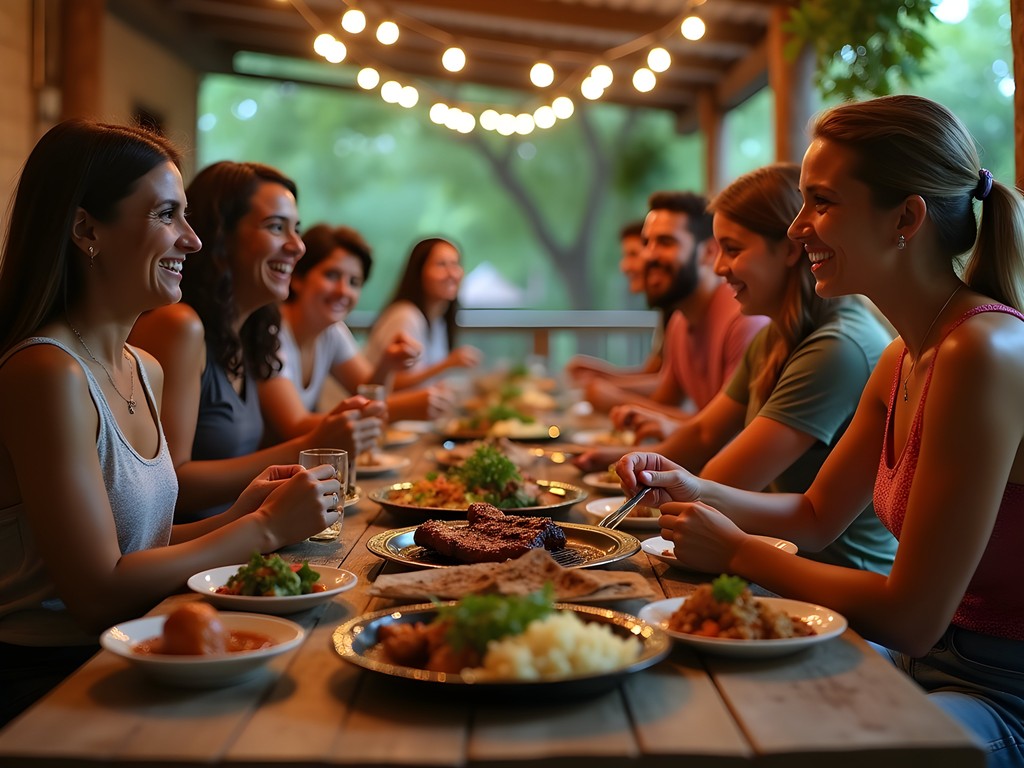
💡 Pro Tips
- Establish clear decision-making processes for group activities to prevent travel fatigue and disagreements
- Allow each family member (including children) to select at least one activity during the trip
- Schedule some independent exploration time for different age groups
Final Thoughts
As our week in the Triple Frontier region drew to a close, I found myself reflecting on borders—both the physical ones we'd crossed between Paraguay and Brazil and the invisible ones we navigate in family relationships. The thundering waters of Iguazu Falls may form a natural boundary between nations, but they also draw people together in shared wonder. Similarly, travel's challenges and joys had strengthened the bonds between our improvised extended family in ways that will endure long after our passports collect new stamps.
The Paraguay approach to Iguazu may require more effort than the traditional tourist routes, but like most paths less traveled, it offers rewards that match its demands. The cultural richness of Ciudad del Este, the uncrowded serenity of Saltos del Monday, and the vibrant contrasts of cross-border experiences created a tapestry of memories far more textured than a simple visit to a famous waterfall could provide.
For families willing to embrace complexity and occasional discomfort, this border-crossing adventure offers a masterclass in adaptation, cultural navigation, and the surprising ways that natural wonders can illuminate human connections. As we said goodbye at Guaraní International Airport, I knew that our next family gathering—wherever and whenever it might be—would build upon the foundation laid beside these magnificent waters where three nations meet.
✨ Key Takeaways
- Starting in Paraguay offers a unique and less crowded approach to Iguazu Falls
- Cross-border logistics require preparation but reward travelers with richer cultural experiences
- Family dynamics evolve in fascinating ways when navigating unfamiliar territories together
- Lesser-known attractions like Saltos del Monday provide valuable contrast to major tourist sites
📋 Practical Information
Best Time to Visit
Spring (September-November) or Fall (March-May)
Budget Estimate
$1,500-2,000 per person for one week including accommodations, meals, and activities
Recommended Duration
6-7 days minimum to experience both countries properly
Difficulty Level
Moderate To Challenging Due To Border Crossings And Language Barriers
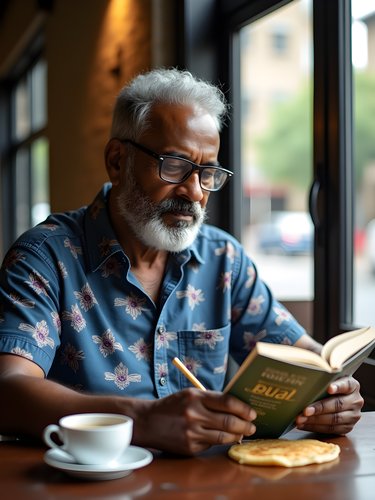
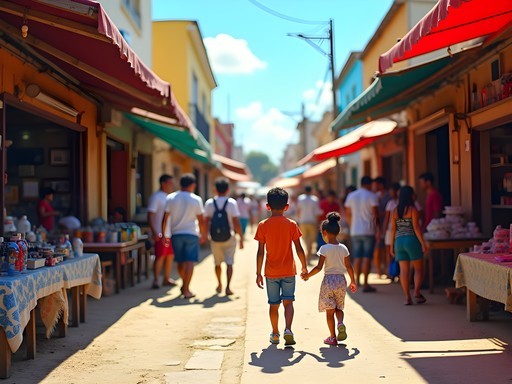
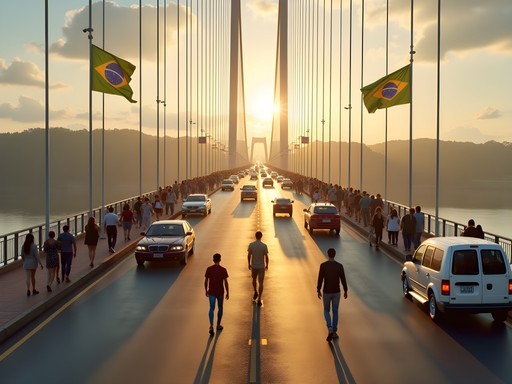
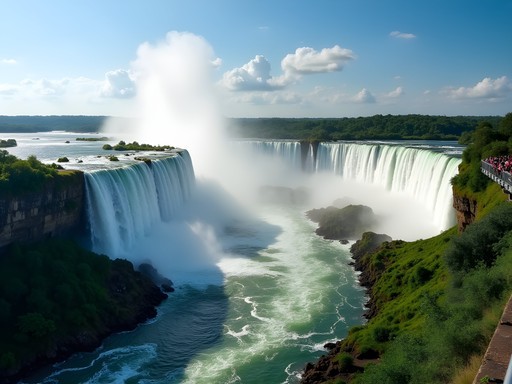
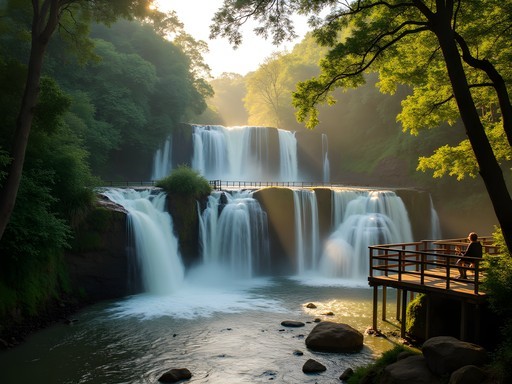
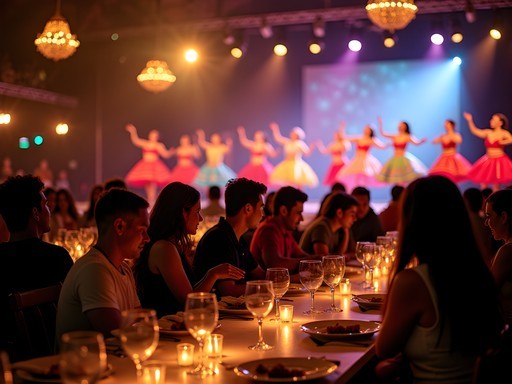
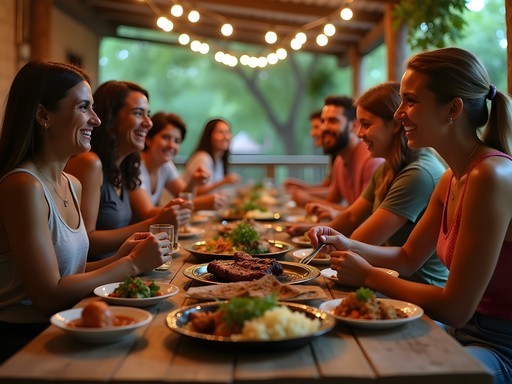


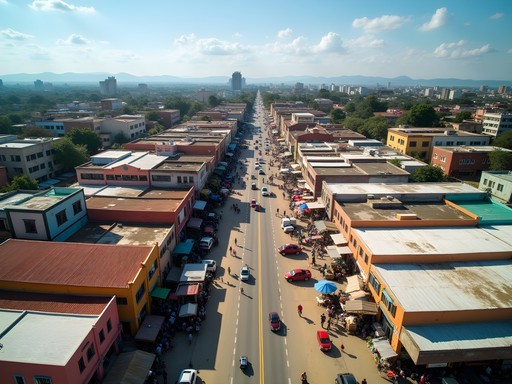







Comments
SouthAmericaFan
Just got back from this exact trip! Your advice about accommodation in Ciudad del Este saved us a ton. We stayed at Hotel Casino Acaray which was surprisingly nice and about half what we would've paid on the Brazilian side. One thing I'd add - the currency situation is confusing with three countries! We found having some of each currency helped, but many places near the falls take credit cards now. The Brazilian immigration was much stricter than Paraguay's, so have all your documents ready. Also, don't miss the bird park (Parque das Aves) on the Brazilian side if you go back!
TravelMom42
Thanks for the hotel recommendation! Did you feel safe in Ciudad del Este? I've heard mixed things.
SouthAmericaFan
It's not as polished as tourist areas in Brazil, but we had no issues. Hotel area was fine. Just use normal travel precautions - don't flash valuables, use hotel safes, etc. The shopping district is chaotic but not dangerous.
AdventureSeeker88
That shot of the falls from the Paraguayan side is incredible! Much better than the standard tourist photos everyone posts.
TravelMom42
Planning to take my kids (7 and 10) next spring. Was the public transportation reliable enough for a family? Or should we just hire a driver?
blueguy
We did it with kids. Public transport works but gets crowded. If budget allows, driver is way less stress with little ones.
Preston Henry
I'd second what blueguy said. Public transport is doable but can be unpredictable. With kids those ages, a driver would make things much smoother, especially crossing the border. The local hotels can usually arrange something reliable.
mountaintime
Never thought of visiting from the Paraguay side! Adding this to my bucket list for sure.
oceanone
Do it! Most people only see Brazil/Argentina sides, but Paraguay gives you a completely different perspective. Plus way fewer tourists.
adventure_granny
Just got back from doing almost this exact itinerary last month! Preston, your tip about starting on the Paraguayan side first was spot on - it made the Brazilian side even more spectacular as a grand finale. One thing I'd add is to bring cash in multiple currencies. My credit cards weren't accepted at several smaller places in Ciudad del Este, and having Brazilian reais, Paraguayan guaraní and US dollars came in handy. The helicopter tour over the falls was expensive but absolutely worth every penny for this 68-year-old's bucket list!
springstar
Oh thank you for the currency tip! Would you say $300 in mixed currencies is enough for a 4-day visit?
adventure_granny
That should be plenty unless you're shopping a lot! Food is quite reasonable. Just keep small bills for taxis and tips.
waveexplorer
That shot of the mist rising from the falls at sunset is incredible! Mind sharing what camera setup you used?
Taylor Moreau
Preston, your account of navigating the Triple Frontier region is spot on. I visited on a business trip last year and extended my stay specifically to see the falls. Your tip about setting up base in Ciudad del Este rather than the more touristy areas was brilliant - I found accommodation costs were nearly 40% lower. One additional tip for readers: if you're planning to cross between all three countries (adding Argentina), ensure your passport has ample blank pages. Border control can be quite stamp-happy, and I nearly ran out of space! Also, the boat tour on the Brazilian side is absolutely worth the extra expense and getting soaked. Wonderful to see coverage of the Paraguayan perspective too - most blogs only cover Brazil and Argentina.
Preston Henry
Thanks for the thoughtful comment, Taylor! Great point about the passport pages - we almost had the same issue. Did you manage to visit Saltos del Monday? It seems many business travelers miss that gem.
Taylor Moreau
I did make it to Saltos del Monday! Had a local colleague who insisted on taking me. Much smaller scale than Iguazu but wonderfully peaceful. I was the only non-local there on a Tuesday afternoon. Used my waterproof phone case which was essential for getting close to the falls without worry.
blueguy
Nice write-up! Did the same border crossing last year. That Friendship Bridge is chaotic but worth it!
Preston Henry
Thanks! Chaotic is definitely the right word. Did you visit both the Brazilian and Paraguayan sides?
blueguy
Yeah, did both! Monday Falls was way less crowded than the Brazilian side. Kinda like having a secret spot.
mountainrider
Going there next month! Did you need any special permits for the kids to cross borders?
Preston Henry
Just their passports and the standard tourist visa requirements. If they're not your children, you'll need authorization letters from the parents. Double check the latest requirements before you go!
mountainrider
Perfect, thanks for the quick response!
Douglas Bradley
What a fascinating perspective on the Triple Frontier region! I visited last year but only saw the falls from Argentina and Brazil. The Paraguayan angle adds another dimension I hadn't considered. Your observations about the border dynamics are spot-on - these liminal spaces often reveal more about countries than their centers do. One thing that helped me navigate the border areas was having a good waterproof bag for documents and electronics. The mist from the falls gets EVERYWHERE, especially if you do the boat rides. I used my waterproof pouch which was perfect for keeping everything dry while still being accessible. Question: did you find the Monday Falls significantly less crowded than the main Iguazu attractions? Always looking for those less-traveled alternatives.
Preston Henry
Douglas - absolutely! Saltos del Monday had maybe 1/20th the visitors of the main falls. We practically had some viewpoints to ourselves, especially in the morning. It's smaller, but the lack of crowds makes up for it.
Venture X
Premium card with 2X miles, $300 travel credit, Priority Pass